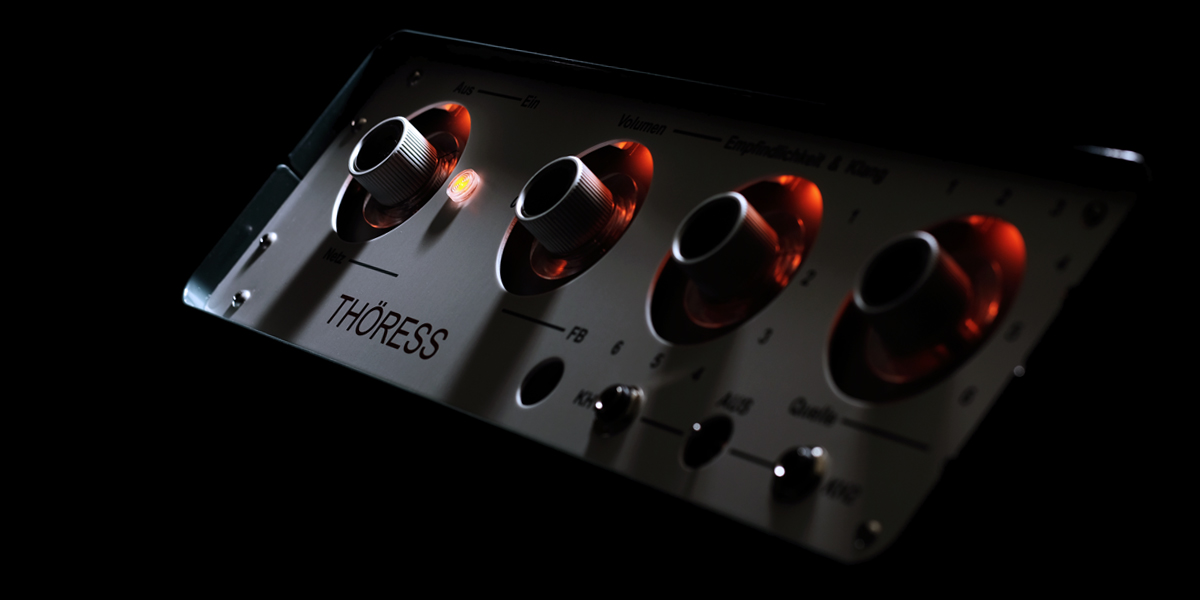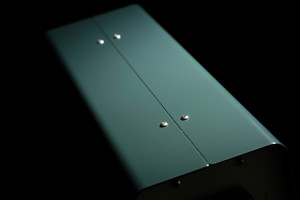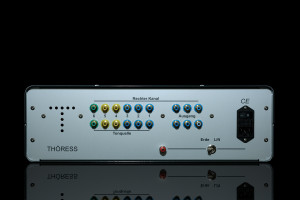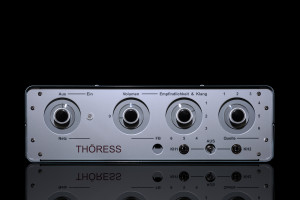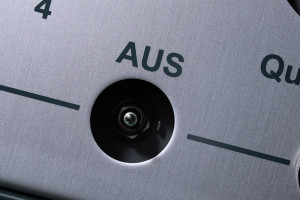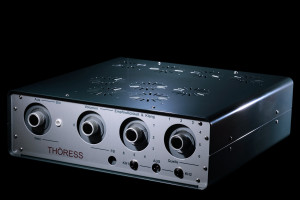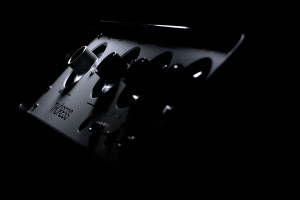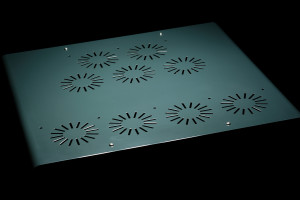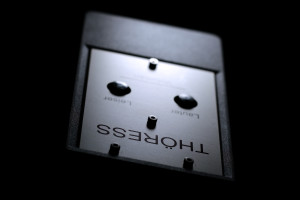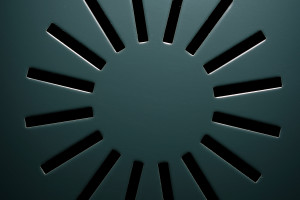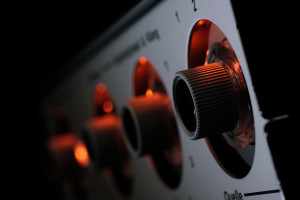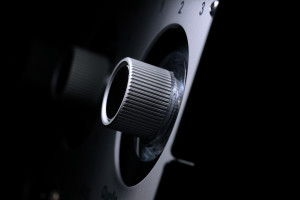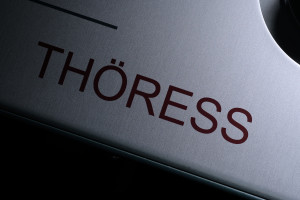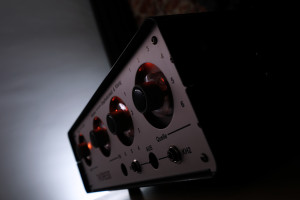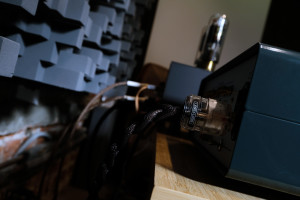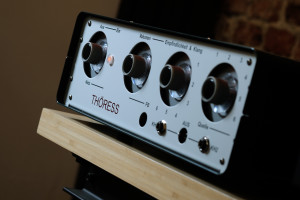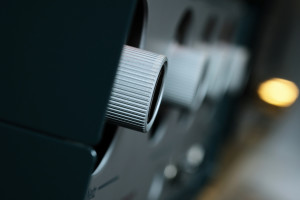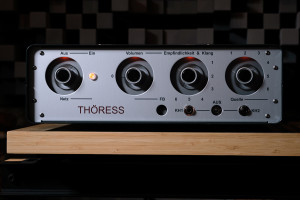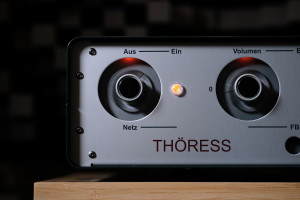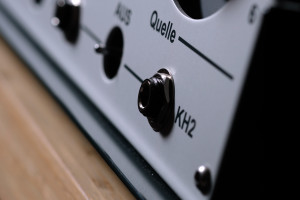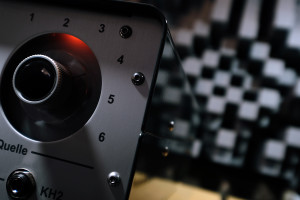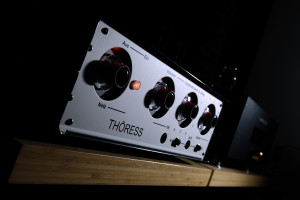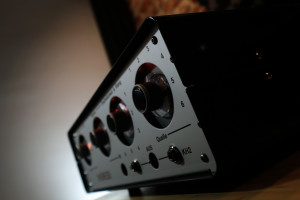Thöress F2A11 integrated amplifier reviewed in 2017 left me very impressed and is one of the very best valve machines I know. When the opportunity to review the same company’s line stage with a major headphone twist emerged, I gladly jumped on-board and that’s how Thöress Dual Function Preamplifier became this writing’s hero. Enjoy!
Introduction
The headphone branch of the audio industry escalated significantly in recent years. Its borders shifted in every direction there is; price, quantity, quality and topology. Goods considered as top shelf stuff a decade ago, now can be classified as mid tier’s entry level representatives at most. We can cherry-pick to our hearts’ content among designs stronger in number and variety than ever before. Headphones not only upped the ante on personal, mobile and properly audiophile counts, but also opened up the gates invitingly for everyone interested to tag along. Knowing how potent this market currently is, many manufacturers not into such items before pay attention now and are keen to expand their portfolio in this specific direction. However, this doesn’t mean that every single audio house willing to jump on-board is driven via financial gain in the first place. At times the decision to do so happens i.e. due to more personal reasons and that’s the case today. If audio hardware can be viewed as a form of art, then Reinhard Thöress must be an artist. A quick glimpse at any of his products followed by a short audition are all it takes to grasp this. Even though his F2A11 integrated amp didn’t impress me right out of the box, several weeks later I fell in love with this machine, whereas complete systems put together by Reinhard were no less impressive visually and sonically. All this plus many conversations the two of us had, finally led to full understanding why he does what he does and why he’s so good at it. The man doesn’t heed to fads and isn’t up to speed on what’s hot in the industry by choice. Practicality, circuit minimalism, single-ended topology, valves and vintage timeless look all merged into one and handmade in the German town of Aachen by Reinhard himself are his way. The only one he knows and highly likely this won’t ever change.
If audio hardware can be viewed as a form of art, then Reinhard Thöress must be an artist. A quick glimpse at any of his products followed by a short audition are all it takes to grasp this. Even though his F2A11 integrated amp didn’t impress me right out of the box, several weeks later I fell in love with this machine, whereas complete systems put together by Reinhard were no less impressive visually and sonically. All this plus many conversations the two of us had, finally led to full understanding why he does what he does and why he’s so good at it. The man doesn’t heed to fads and isn’t up to speed on what’s hot in the industry by choice. Practicality, circuit minimalism, single-ended topology, valves and vintage timeless look all merged into one and handmade in the German town of Aachen by Reinhard himself are his way. The only one he knows and highly likely this won’t ever change.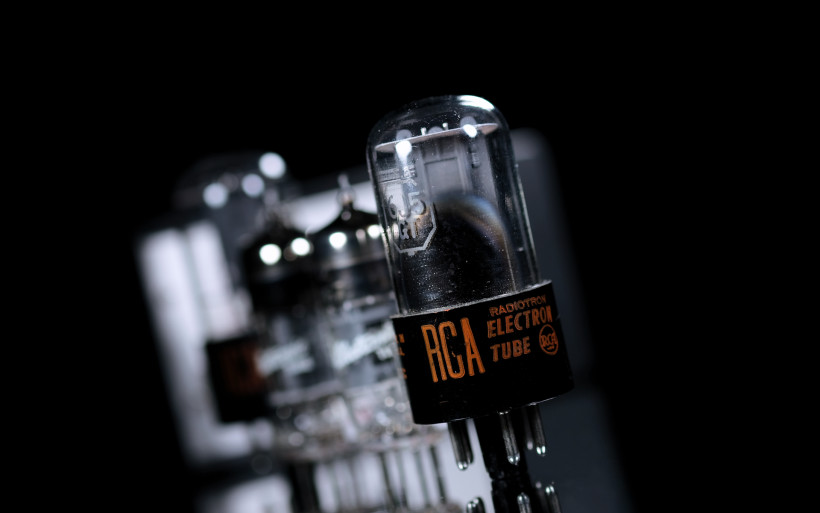 Thöress Dual Function Preamplifier (aka the DFP) originated as two separate yet simultaneously developed projects. A standalone headphone amp Reinhard needed privately as a handy tool to silently evaluate his own work at home, whereas customers of his top seller – The Phono Enhancer – created demand for a standalone line stage to complement it. However, the longer the man developed both machines, the more reasons he found to have them served as one. His line stage’s valve gain circuit also perfectly suitable for the headphone job was the main argument. Past this point the goal was clear. After three years of R&D in total, Thöress Dual Function Preamplifier saw public daylight in Munich 2017 for the very first time.
Thöress Dual Function Preamplifier (aka the DFP) originated as two separate yet simultaneously developed projects. A standalone headphone amp Reinhard needed privately as a handy tool to silently evaluate his own work at home, whereas customers of his top seller – The Phono Enhancer – created demand for a standalone line stage to complement it. However, the longer the man developed both machines, the more reasons he found to have them served as one. His line stage’s valve gain circuit also perfectly suitable for the headphone job was the main argument. Past this point the goal was clear. After three years of R&D in total, Thöress Dual Function Preamplifier saw public daylight in Munich 2017 for the very first time.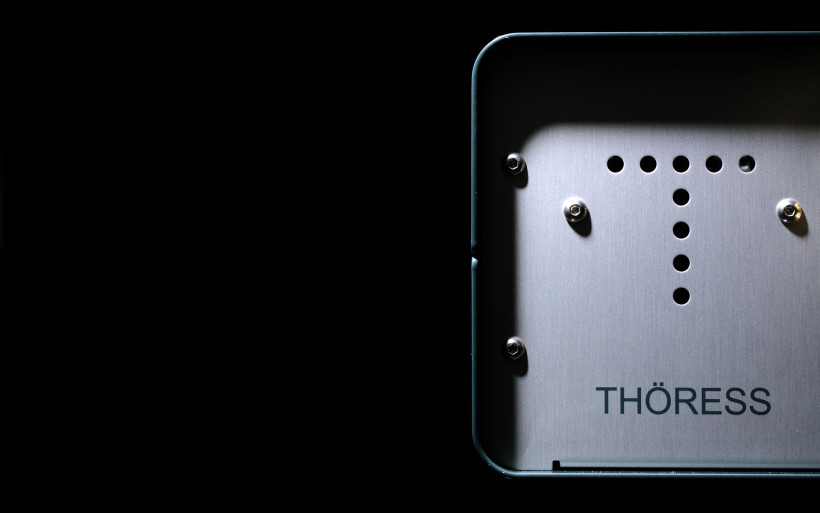 Thöress hardware thus far not associated with headphones could be the reason to ask about Reinhard’s knowledge on this subject in general, or even suspect that he has none. Wrong, it’s the other way around, even though our engineer’s work didn’t express this any earlier. During one of our conversations Reinhard pointed at Sennheiser HD 600 as his all-time favourite, which didn’t struck me as odd at all. However, this product in particular lands on his head far more often than i.e. Focal Utopia or HifiMan HE-1000 he also has. But most interestingly, Reinhard’s view on the undoubtedly classy HD 600 amplified just right fully resonated with mine, picture this model’s inherent veil, darkness and thickness left behind the door in favour of vividness, openness and better linearity. Herr Thöress clearly heard ’em Senns proper and also placed i.e. HD 800 and LCD-2 at the opposite ends of the headphone spectrum just as I would, which proved me bluntly that he’s in this specific know deep. This leaves us with one question: what kind of a machine did he end up with?
Thöress hardware thus far not associated with headphones could be the reason to ask about Reinhard’s knowledge on this subject in general, or even suspect that he has none. Wrong, it’s the other way around, even though our engineer’s work didn’t express this any earlier. During one of our conversations Reinhard pointed at Sennheiser HD 600 as his all-time favourite, which didn’t struck me as odd at all. However, this product in particular lands on his head far more often than i.e. Focal Utopia or HifiMan HE-1000 he also has. But most interestingly, Reinhard’s view on the undoubtedly classy HD 600 amplified just right fully resonated with mine, picture this model’s inherent veil, darkness and thickness left behind the door in favour of vividness, openness and better linearity. Herr Thöress clearly heard ’em Senns proper and also placed i.e. HD 800 and LCD-2 at the opposite ends of the headphone spectrum just as I would, which proved me bluntly that he’s in this specific know deep. This leaves us with one question: what kind of a machine did he end up with?
Build
The product arrived in a single cardboard filled with numerous foam forms. Two small boxes found inside stored two identical sets of tubes and a handy RC, which looked like something only Reinhard could do. Its rugged and solid plastic enclosure sported aluminium front bolted via protruding screws, all labels in German and just two volume control buttons with their order reversed; the left one turned volume up, the other decreased it. When asked about this odd solution, our engineer explained that that’s how he’s been implementing it since the very beginning. Knowing him I can only say that this small yet adorable twist fits the man rather well.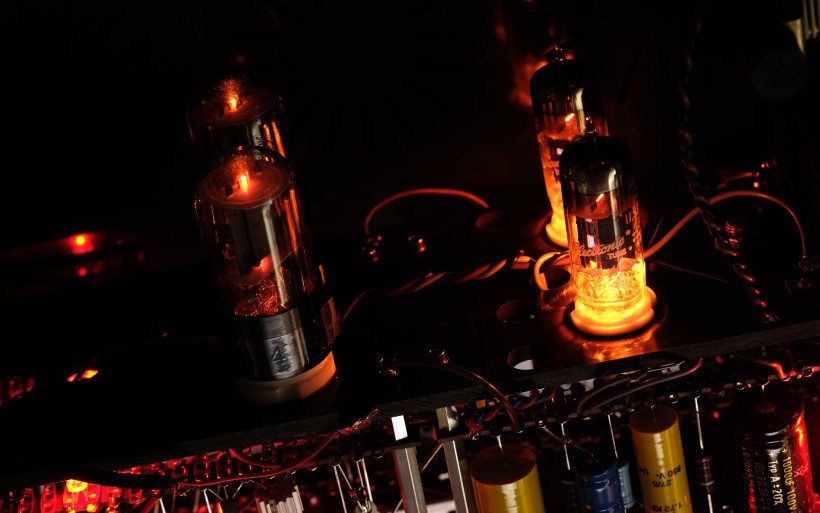 The DFP measures (WxDxH) 434x434x149mm and weighs 10 kilograms, thus it’s as big as a proper full-sized deck yet easily manageable. Just as any other Thöress product, this one looks and feels very much like a mid-20th century’s escapee. With its round thin chassis, large knobs and green(ish) semi-glossy coating, the DFP doesn’t resemble any audio product I know and is quite the looker at that. Reinhard’s F2A11 deck visually didn’t impress me early on at all, however his line stage I’ve found charming right from the get-go. Even though this vintage alike audio apparatus doesn’t have CNC-milled housing, a nice display or any other oh so very modern and popular additions, it’s brilliantly executed nonetheless. Devil’s in the details and in today’s German case these stand for perfectly clicky and smooth knobs of a spot on resistance, very nice paint job, all enclosure’s parts precisely matched and put together, finely cut venting openings etc. Up close it’s obvious that Reinhard put a lot of work in this project and it truly shows.
The DFP measures (WxDxH) 434x434x149mm and weighs 10 kilograms, thus it’s as big as a proper full-sized deck yet easily manageable. Just as any other Thöress product, this one looks and feels very much like a mid-20th century’s escapee. With its round thin chassis, large knobs and green(ish) semi-glossy coating, the DFP doesn’t resemble any audio product I know and is quite the looker at that. Reinhard’s F2A11 deck visually didn’t impress me early on at all, however his line stage I’ve found charming right from the get-go. Even though this vintage alike audio apparatus doesn’t have CNC-milled housing, a nice display or any other oh so very modern and popular additions, it’s brilliantly executed nonetheless. Devil’s in the details and in today’s German case these stand for perfectly clicky and smooth knobs of a spot on resistance, very nice paint job, all enclosure’s parts precisely matched and put together, finely cut venting openings etc. Up close it’s obvious that Reinhard put a lot of work in this project and it truly shows.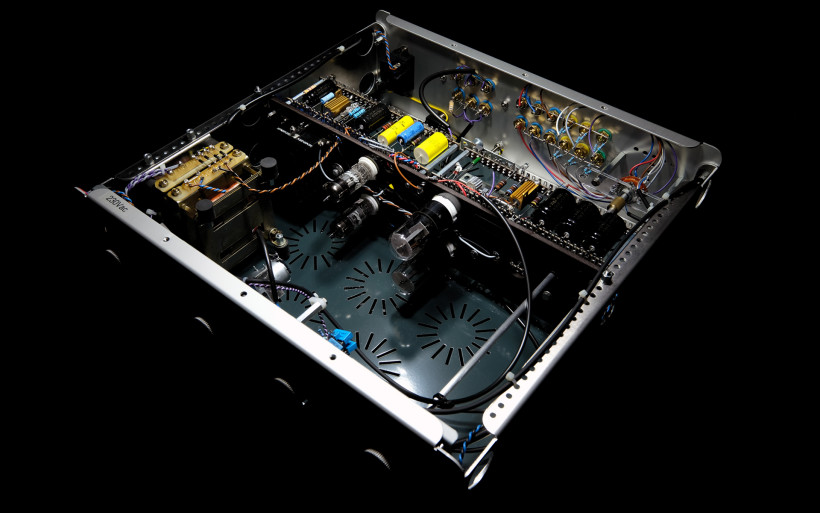 The DFP’s front made of two matte gray aluminium plates contrasts nicely with its top and bottom. The external surface loaded with German labels sports four nicely lit up openings, each with a large knob fixed to the internal wall. This arrangement surely ups the ante on visuals to have the product’s front interesting and three-dimensional. Each plastic knob sports a translucent circle with inlaid indication line. The secondary on/off rotary switch on the left neighbours with volume control, which is then followed by Reinhard’s own sensitivity and tone adjustment scheme labeled as ‘Empfindlichkeit&Klang’ and the last knob is the DFP’s input selector. The opening with IR receiver found a bit below sits right next to two 6.3mm headphone outs. The selector switch in-between these enables either one or the other and fixed in the middle disengages them. It’s smart to set it like so if the DFP is on duty as a line stage as it doesn’t have any auto-sensing mechanism, signal goes to its line and headphone outs simultaneously. All lights on the product’s front reveal their appealing orange glow in full only when it’s dark, daylight makes them barely visible.
The DFP’s front made of two matte gray aluminium plates contrasts nicely with its top and bottom. The external surface loaded with German labels sports four nicely lit up openings, each with a large knob fixed to the internal wall. This arrangement surely ups the ante on visuals to have the product’s front interesting and three-dimensional. Each plastic knob sports a translucent circle with inlaid indication line. The secondary on/off rotary switch on the left neighbours with volume control, which is then followed by Reinhard’s own sensitivity and tone adjustment scheme labeled as ‘Empfindlichkeit&Klang’ and the last knob is the DFP’s input selector. The opening with IR receiver found a bit below sits right next to two 6.3mm headphone outs. The selector switch in-between these enables either one or the other and fixed in the middle disengages them. It’s smart to set it like so if the DFP is on duty as a line stage as it doesn’t have any auto-sensing mechanism, signal goes to its line and headphone outs simultaneously. All lights on the product’s front reveal their appealing orange glow in full only when it’s dark, daylight makes them barely visible.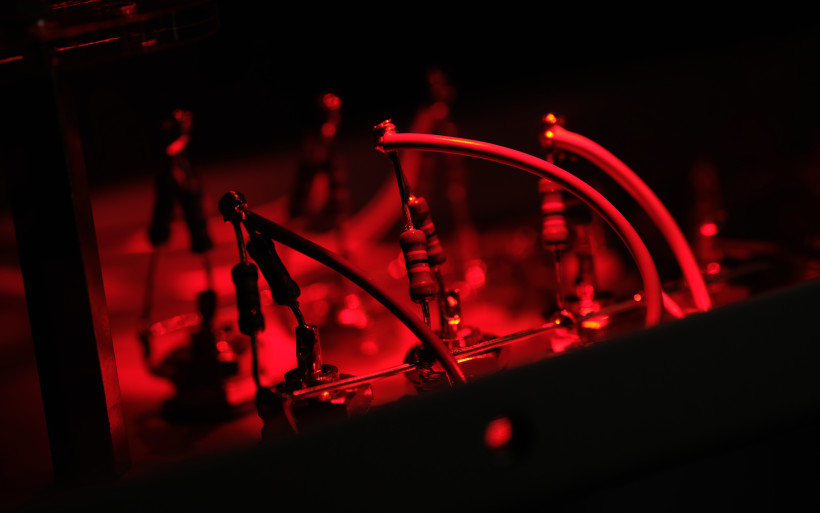 The DFP’s top and bottom chassis parts sport multiple circular venting notches and a bit extended form small hoods for its both ends. Four rubber feet are found on its underbelly, whereas the rear is occupied by the usual suspects; an IEC socket with the main on/off switch and self-replaceable fuse, three RCA outputs and six inputs in the same standard. There’s also a grounding pin in there and a ground lift switch. All RCAs on the DFP’s behind are widely placed so they’ll accept any ICs with no issues. Its inputs are set in three different colours for a reason; the ones labeled as 1, 2 and 3 are of 26dB gain, whereas sockets 4+5 and 6 have this parameter set at 20 and 15dB max. respectively. Reinhard isn’t a fan of balanced technology in home applications, hence it’s off the table in case of all his hardware.
The DFP’s top and bottom chassis parts sport multiple circular venting notches and a bit extended form small hoods for its both ends. Four rubber feet are found on its underbelly, whereas the rear is occupied by the usual suspects; an IEC socket with the main on/off switch and self-replaceable fuse, three RCA outputs and six inputs in the same standard. There’s also a grounding pin in there and a ground lift switch. All RCAs on the DFP’s behind are widely placed so they’ll accept any ICs with no issues. Its inputs are set in three different colours for a reason; the ones labeled as 1, 2 and 3 are of 26dB gain, whereas sockets 4+5 and 6 have this parameter set at 20 and 15dB max. respectively. Reinhard isn’t a fan of balanced technology in home applications, hence it’s off the table in case of all his hardware. Let’s get back to the ‘Empfindlichkeit & Klang’ knob. Presets 1 (significant bass and average treble boost), 2 (mild treble boost) and 3 (flat FR) are of -6dB lower gain/sensitivity, whereas positions 4 (average bass boost), 5 (mild bass boost) and 6 (flat FR) are of full gain. All listed tweaks introduce quite the room to maneuver as far as sound tailoring goes, whereas low sensitivity/gain options help to counteract the loudness effect. Each was implemented in accordance with Reinhard’s minimalist approach, which translates to a single capacitor per option and two extra in case of anti-loudness presets.
Let’s get back to the ‘Empfindlichkeit & Klang’ knob. Presets 1 (significant bass and average treble boost), 2 (mild treble boost) and 3 (flat FR) are of -6dB lower gain/sensitivity, whereas positions 4 (average bass boost), 5 (mild bass boost) and 6 (flat FR) are of full gain. All listed tweaks introduce quite the room to maneuver as far as sound tailoring goes, whereas low sensitivity/gain options help to counteract the loudness effect. Each was implemented in accordance with Reinhard’s minimalist approach, which translates to a single capacitor per option and two extra in case of anti-loudness presets.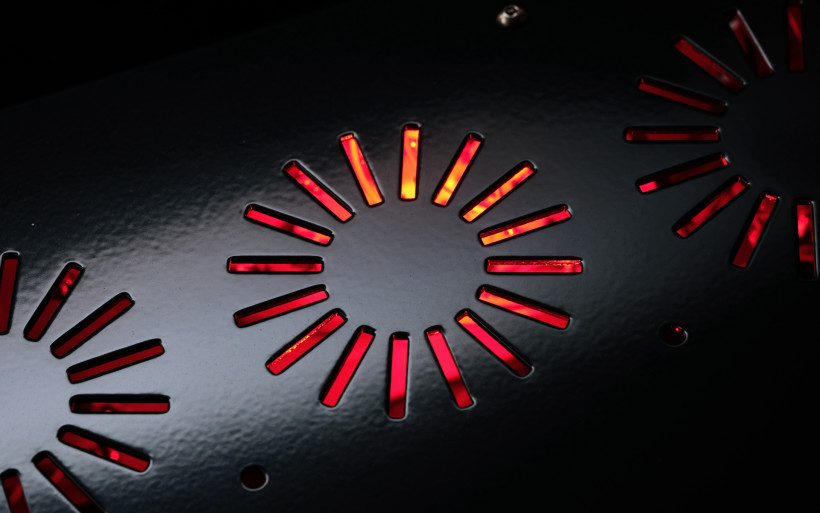 Getting inside the DFP was a breeze. Eight easily removed screws in total, four on its top and two per side, was all it took. The internal view many people would see as frugal and rightfully so if sheer parts’ number is taken into account, however Reinhard’s circuit looks like so for a reason. To end up with just a few quality ingredients and performance as described below, proves us that in audio less is indeed more if executed right, which is our man’s game exactly. Lots of air under the DFP’s hood is the effect of extensive reduction, simplicity, minimalism and engineering elegance. Reinhard trims his work to a point where there’s no excess left and once that’s sorted, he then optimizes each component to pursue best sonics possible, which is anything but easy. Not only his approach is admirable in my book, but also very clever and unique. Not even for a second I viewed the DFP’s really nicely assembled inside as an example of cost cutting.
Getting inside the DFP was a breeze. Eight easily removed screws in total, four on its top and two per side, was all it took. The internal view many people would see as frugal and rightfully so if sheer parts’ number is taken into account, however Reinhard’s circuit looks like so for a reason. To end up with just a few quality ingredients and performance as described below, proves us that in audio less is indeed more if executed right, which is our man’s game exactly. Lots of air under the DFP’s hood is the effect of extensive reduction, simplicity, minimalism and engineering elegance. Reinhard trims his work to a point where there’s no excess left and once that’s sorted, he then optimizes each component to pursue best sonics possible, which is anything but easy. Not only his approach is admirable in my book, but also very clever and unique. Not even for a second I viewed the DFP’s really nicely assembled inside as an example of cost cutting.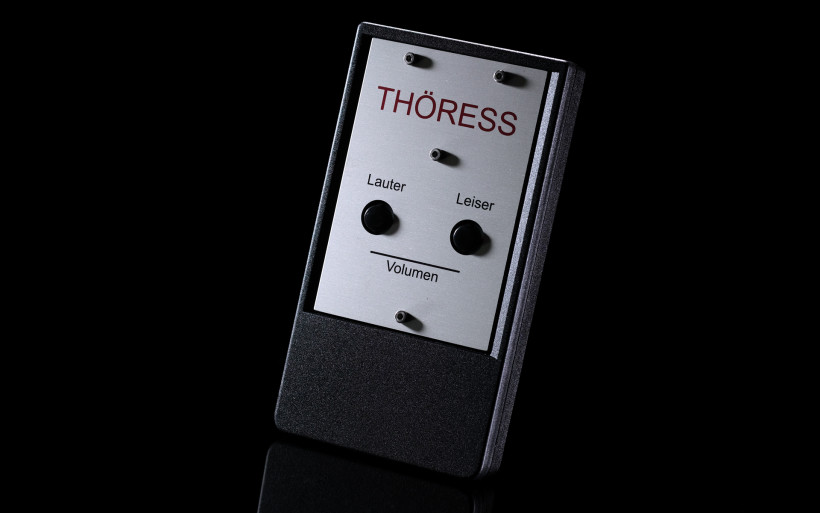 The DFP’s circuitry is executed in point-to-point fashion with almost all components mounted to two supportive rails per channel. Parts used are quality resistors and capacitors by Vishay and Wima, whereas volume control is based on a motorized Alps pot custom-made for very low angle sensitivity and cherry-picked via measurements from a large production batch. Units of 0.5dB channel imbalance at most are what Reinhard’s after. Needless to say, only a handful is fit for the job, whereas also measured and paired NOS tubes used in his machines score lower rejection notes. Many of them simply still are within needed specs after decades spent in their boxes.
The DFP’s circuitry is executed in point-to-point fashion with almost all components mounted to two supportive rails per channel. Parts used are quality resistors and capacitors by Vishay and Wima, whereas volume control is based on a motorized Alps pot custom-made for very low angle sensitivity and cherry-picked via measurements from a large production batch. Units of 0.5dB channel imbalance at most are what Reinhard’s after. Needless to say, only a handful is fit for the job, whereas also measured and paired NOS tubes used in his machines score lower rejection notes. Many of them simply still are within needed specs after decades spent in their boxes.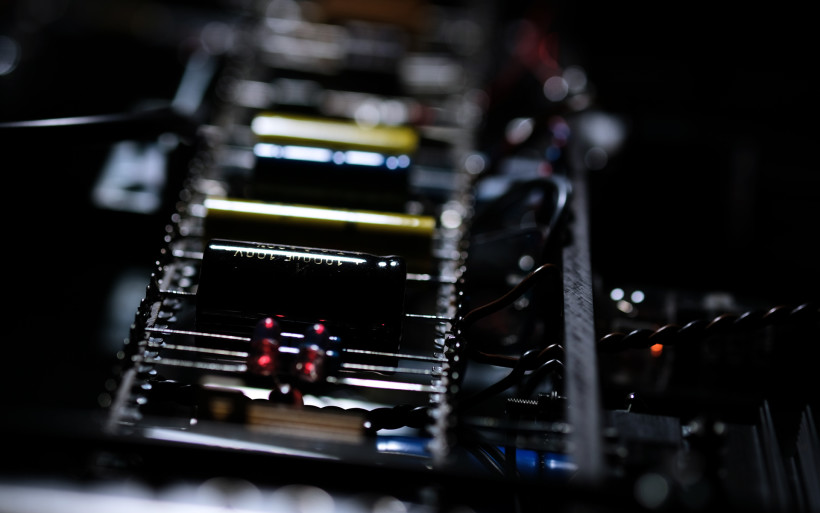 Each channel of the DFP circuit’s gain stage is based on one 6J5GT octal single-triode and then followed by one triode-strapped 12GN7 unity gain buffer. The former valve of medium gain low transconductance type is known as one of the most linear devices of the sort ever developed, whereas the 12GN7 is a modern high current/transconductance/gain power tube, perfectly suitable for buffer applications. The same pairing Reinhard exploits in his EHT mono amps, interestingly based on the schematic very similar to the one of the DFP.
Each channel of the DFP circuit’s gain stage is based on one 6J5GT octal single-triode and then followed by one triode-strapped 12GN7 unity gain buffer. The former valve of medium gain low transconductance type is known as one of the most linear devices of the sort ever developed, whereas the 12GN7 is a modern high current/transconductance/gain power tube, perfectly suitable for buffer applications. The same pairing Reinhard exploits in his EHT mono amps, interestingly based on the schematic very similar to the one of the DFP.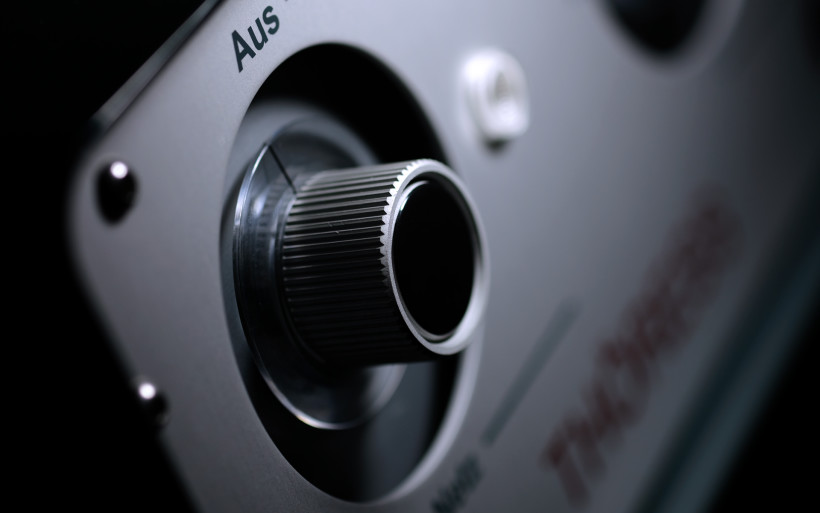 Tubes occupy Reinhard’s hardware not because of their sonic charm but inherent linearity suitable for his minimalist design approach. Rather than a hybrid case, the man describes his circuit as a ‘contemporary solid state interleaved tube’ scheme. It has very low distortions, output impedance of around 5Ω and is free from any feedback loops. Both triode types inside the DFP are complemented by a cleverly chosen set of solid state devices; light emission diodes, MOSFETs and bipolar transistors. The goal was to provide optimal conditions for all glass on-board and squeeze every bit of performance out of it. Tubes are heated via a constant 300mA DC series current. A single bipolar device operates as a current sink, whereas a bridge of cleanly switching Schottky diodes does the rectification job. Reinhard explained that, due to low heat dissipation on the transistor, such an arrangement is simple, stable, of very low noise and reliable above all else.
Tubes occupy Reinhard’s hardware not because of their sonic charm but inherent linearity suitable for his minimalist design approach. Rather than a hybrid case, the man describes his circuit as a ‘contemporary solid state interleaved tube’ scheme. It has very low distortions, output impedance of around 5Ω and is free from any feedback loops. Both triode types inside the DFP are complemented by a cleverly chosen set of solid state devices; light emission diodes, MOSFETs and bipolar transistors. The goal was to provide optimal conditions for all glass on-board and squeeze every bit of performance out of it. Tubes are heated via a constant 300mA DC series current. A single bipolar device operates as a current sink, whereas a bridge of cleanly switching Schottky diodes does the rectification job. Reinhard explained that, due to low heat dissipation on the transistor, such an arrangement is simple, stable, of very low noise and reliable above all else. Due to their switching behaviour comparably clean to Shottkys, passive glass avalanche diodes as rectifiers are seen not only in DFP’s high tension supply, but all Reinhard’s amps. The reservoir capacitor is followed by a 3-stage RC-filtering section based on electrolytic caps (by German Fischer&Tausche company), which provides low ripple voltage to the following ‘simple yet outstanding’ circuit Herr Thöress views as a stabilizer free from a sensor amplifier within a feedback loop, rather than a regulator which would normally have this.
Due to their switching behaviour comparably clean to Shottkys, passive glass avalanche diodes as rectifiers are seen not only in DFP’s high tension supply, but all Reinhard’s amps. The reservoir capacitor is followed by a 3-stage RC-filtering section based on electrolytic caps (by German Fischer&Tausche company), which provides low ripple voltage to the following ‘simple yet outstanding’ circuit Herr Thöress views as a stabilizer free from a sensor amplifier within a feedback loop, rather than a regulator which would normally have this.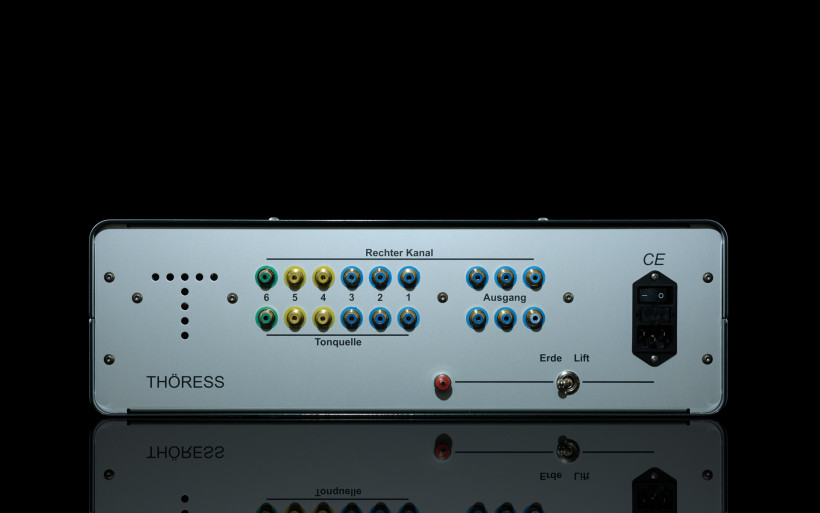 Just as any other Thöress machine, the DFP is based on a low leakage deadly silent power transformer handmade by Reinhard himself. Its coils are wound on a vintage Aumann machine and to reduce residual vibrations and interference, the part is mounted to the chassis via noise damping elements. In-house made power transformers also provide worldwide mains readiness.
Just as any other Thöress machine, the DFP is based on a low leakage deadly silent power transformer handmade by Reinhard himself. Its coils are wound on a vintage Aumann machine and to reduce residual vibrations and interference, the part is mounted to the chassis via noise damping elements. In-house made power transformers also provide worldwide mains readiness.
Sound
In order to review Thöress Dual Function Preamplifier as a line stage, fidata HFAS-S10U handled storage and transport duties, then LampizatOr Pacific DAC (KR Audio T-100 + KR Audio 5U4G Ltd. Ed.) took over to pass the signal to either today’s hero or Kinki Studio EX-P7. Then two distinctively different configurations came into play; Martin Gateley’s soundkaos Libération fronted by FirstWatt F7 and then Kinki Studio EX-B7 monos married to my Boenicke W8. Two LessLoss C-MARC power cords were used in order to extract natural character of each preamplifier. C-MARC speaker cable was also exploited and so were two sets of Audiomica Laboratory Erys Excellence ICs in-between key components. Today’s hero as a standalone headphone deck was compared to iFi audio Pro iCAN. Both were fronted by the same transport, DAC and every other component involved. Three headphones on duty were HifiMan Susvara, Meze Empyrean and Beyerdynamic T1. Harnesses for them all were Noir hybrids made by Forza AudioWorks.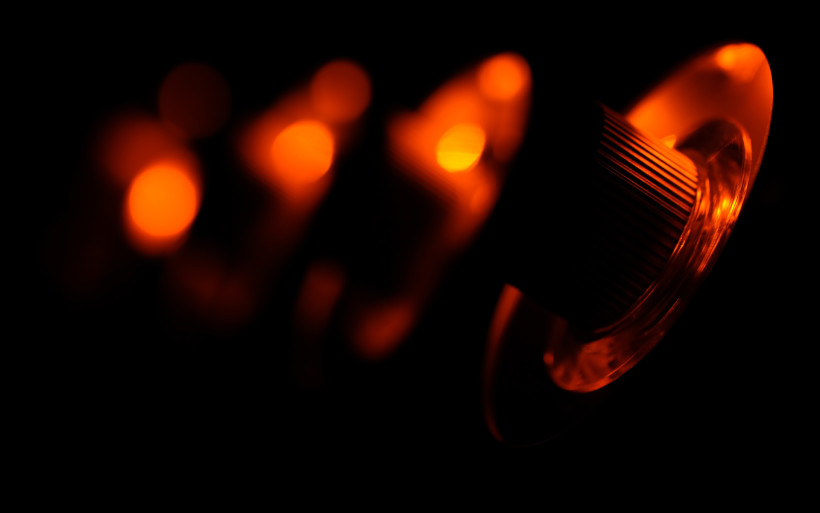 Reinhard’s device as a headphones deck interested me the most, hence its 6.3mm outs were on duty at first. As far as functionality goes, the DFP wasn’t as generous as its competitor. No other product known to me is on this count, Pro iCAN is exceptionally versatile and very powerful. Once all its bells and whistles are taken into account, the Brit enables sound tailoring significant enough to get along perfectly fine with realistically all non-electrostatic headphones on the market. That’s why to have today’s comparison fair, Pro iCAN had its bass and spatial boosters turned off, whereas its main operation mode switch was set in the middle to have JAN GE5670 tubes involved. The main goal of the headphone exercise was to know how Reinhard’s machine sounded like unaltered, hence its tone control was set to either the third or the sixth position.
Reinhard’s device as a headphones deck interested me the most, hence its 6.3mm outs were on duty at first. As far as functionality goes, the DFP wasn’t as generous as its competitor. No other product known to me is on this count, Pro iCAN is exceptionally versatile and very powerful. Once all its bells and whistles are taken into account, the Brit enables sound tailoring significant enough to get along perfectly fine with realistically all non-electrostatic headphones on the market. That’s why to have today’s comparison fair, Pro iCAN had its bass and spatial boosters turned off, whereas its main operation mode switch was set in the middle to have JAN GE5670 tubes involved. The main goal of the headphone exercise was to know how Reinhard’s machine sounded like unaltered, hence its tone control was set to either the third or the sixth position.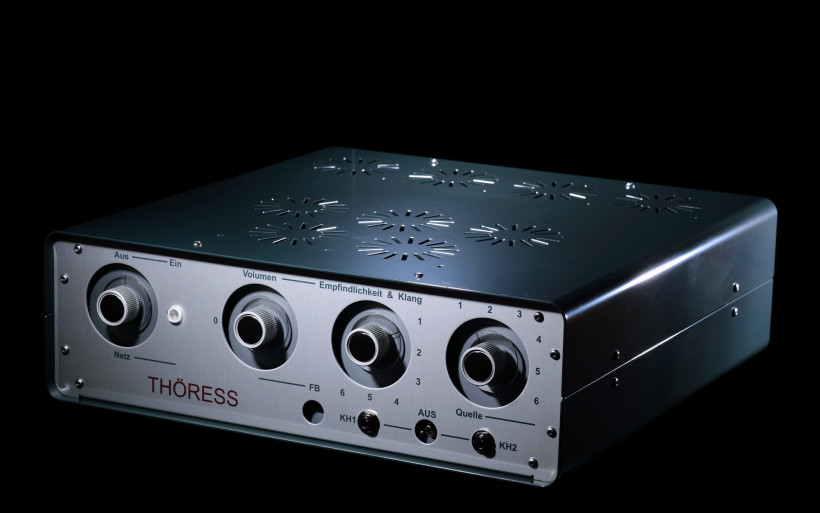 As the easiest load available, Meze Empyrean was the first in line. Early on it struck me how pleasantly silent the DFP was. With no music on mild noise kicked in at volume level a fair bit above 3 o’clock. With these specific headphones this equaled to instantly deafening SPL as during normal listening they didn’t go above 11 o’clock. Point being, Reinhard’s product was dead quiet and several minutes into the very first audition it also became quite clear what sonic profile it sported. The man’s F2A11 integrated amp was harmonically generous enough for my ears to know that valves were involved. However, it didn’t prettify music but showed it as it was and with suitable load nearby was feisty while doing so. It simply didn’t sound quite like a regular valve affair, whereas the DFP did something very different.
As the easiest load available, Meze Empyrean was the first in line. Early on it struck me how pleasantly silent the DFP was. With no music on mild noise kicked in at volume level a fair bit above 3 o’clock. With these specific headphones this equaled to instantly deafening SPL as during normal listening they didn’t go above 11 o’clock. Point being, Reinhard’s product was dead quiet and several minutes into the very first audition it also became quite clear what sonic profile it sported. The man’s F2A11 integrated amp was harmonically generous enough for my ears to know that valves were involved. However, it didn’t prettify music but showed it as it was and with suitable load nearby was feisty while doing so. It simply didn’t sound quite like a regular valve affair, whereas the DFP did something very different.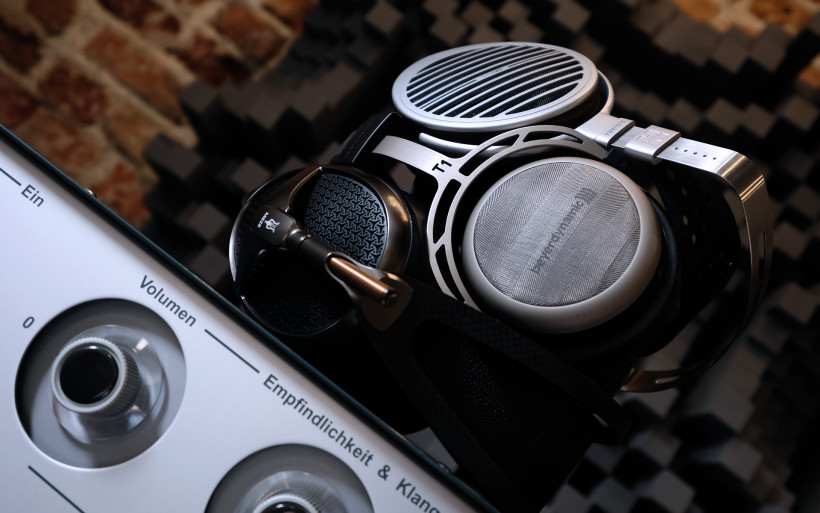 Reinhard’s line stage in a jiffy revealed itself as gutsy, charming and utmost pleasant product. Such voicing caught me off guard past the F2A11 adventure, which I still remember well. As a very nicely executed balancing act it surely is, Meze’s top tier specimen sounded remarkably well with the DFP. This combination clearly was a synergy work at its finest; inherent thickness of today’s hero injected pleasant fat into the Empyrean’s natural evenness, openness and unbiased FR response. The result was vivid, rich and properly informational. But most importantly, two major twists occured; one involved spatial presentation and the other was agility related.
Reinhard’s line stage in a jiffy revealed itself as gutsy, charming and utmost pleasant product. Such voicing caught me off guard past the F2A11 adventure, which I still remember well. As a very nicely executed balancing act it surely is, Meze’s top tier specimen sounded remarkably well with the DFP. This combination clearly was a synergy work at its finest; inherent thickness of today’s hero injected pleasant fat into the Empyrean’s natural evenness, openness and unbiased FR response. The result was vivid, rich and properly informational. But most importantly, two major twists occured; one involved spatial presentation and the other was agility related.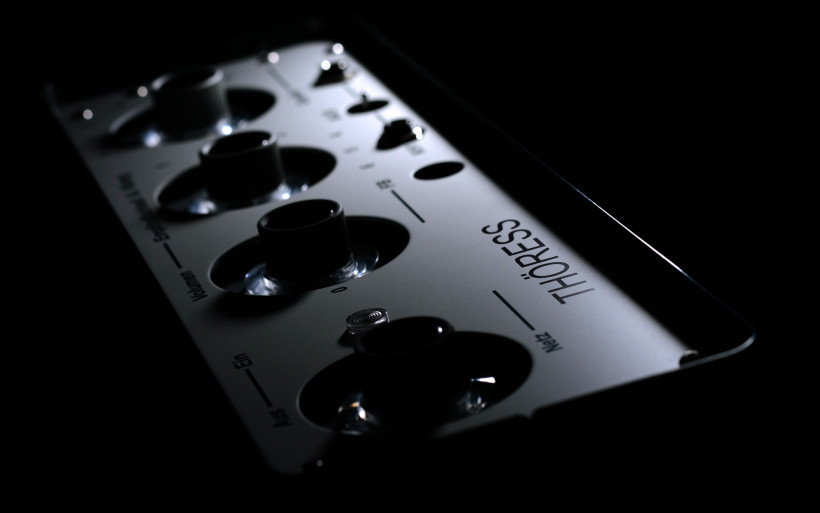 Sound sources served as big, hefty and very close shapes turned out to be one of the DFP’s most distinctive features. The sensation of being inside of a quite unescapable bubble had several interesting successions. By cutting distance to key musical events, such voicing amplified their presence and served them in more intimate and direct fashion than they usually were. Instead of providing perspective from one of seats up front, it put me right in-between musicians. Subjectively speaking, I got used to huge open landscapes served the former way, hence what the DFP did normally I’d consider as limitation. However, this dual affair did the up close and personal job in the first place and didn’t neglect all remaining layers at all. Nothing was removed, but reachable if needed. Instruments right next to my ears were the key focal point, whereas generous texturing, vividness, richness and heft followed. Surprisingly, the result wasn’t stuffy or restrictive, the DFP created involving, pleasant and sensible space just as the F2A11 did a good while ago; all virtual sound sources were nicely separated one from another and finely oxygenated. On this specific count Reinhard’s machine was something truly special and utmost alive.
Sound sources served as big, hefty and very close shapes turned out to be one of the DFP’s most distinctive features. The sensation of being inside of a quite unescapable bubble had several interesting successions. By cutting distance to key musical events, such voicing amplified their presence and served them in more intimate and direct fashion than they usually were. Instead of providing perspective from one of seats up front, it put me right in-between musicians. Subjectively speaking, I got used to huge open landscapes served the former way, hence what the DFP did normally I’d consider as limitation. However, this dual affair did the up close and personal job in the first place and didn’t neglect all remaining layers at all. Nothing was removed, but reachable if needed. Instruments right next to my ears were the key focal point, whereas generous texturing, vividness, richness and heft followed. Surprisingly, the result wasn’t stuffy or restrictive, the DFP created involving, pleasant and sensible space just as the F2A11 did a good while ago; all virtual sound sources were nicely separated one from another and finely oxygenated. On this specific count Reinhard’s machine was something truly special and utmost alive.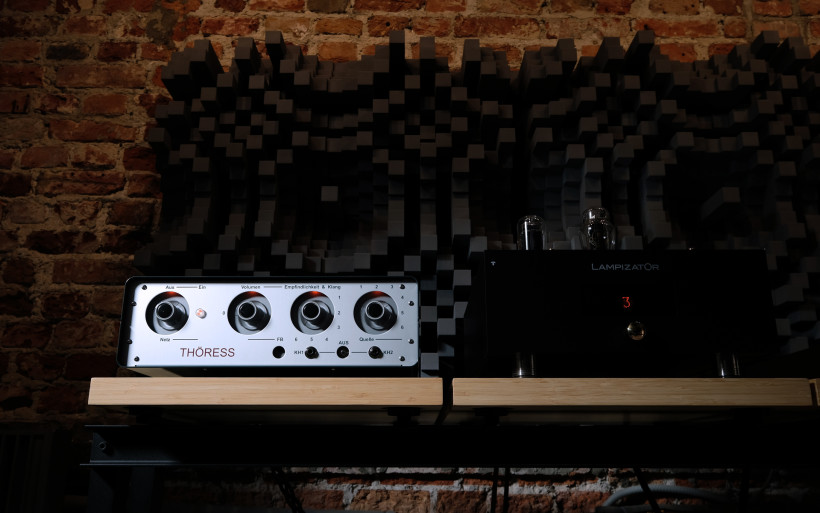 Pro iCAN did the same spatial job more openly than today’s hardware. It painted smaller and more distant instruments to be viewed as geared more towards accuracy, evenness and insight than pleasure, spice and reality changing twists. iFi audio’s top of the line hybrid deck also didn’t miss a thing on tangibility and richness counts. It sounded generously complex albeit somewhat cooler and less intensely. Up to this point the battle was pretty much even-steven and the choice between the two products came down to personal taste more than anything else. The more intimate and tweaked DFP with Empyreans was my pick. With this particular load it was more tangible, sported darker background and scored higher on nuances and finishing touches. It sounded more refined.
Pro iCAN did the same spatial job more openly than today’s hardware. It painted smaller and more distant instruments to be viewed as geared more towards accuracy, evenness and insight than pleasure, spice and reality changing twists. iFi audio’s top of the line hybrid deck also didn’t miss a thing on tangibility and richness counts. It sounded generously complex albeit somewhat cooler and less intensely. Up to this point the battle was pretty much even-steven and the choice between the two products came down to personal taste more than anything else. The more intimate and tweaked DFP with Empyreans was my pick. With this particular load it was more tangible, sported darker background and scored higher on nuances and finishing touches. It sounded more refined.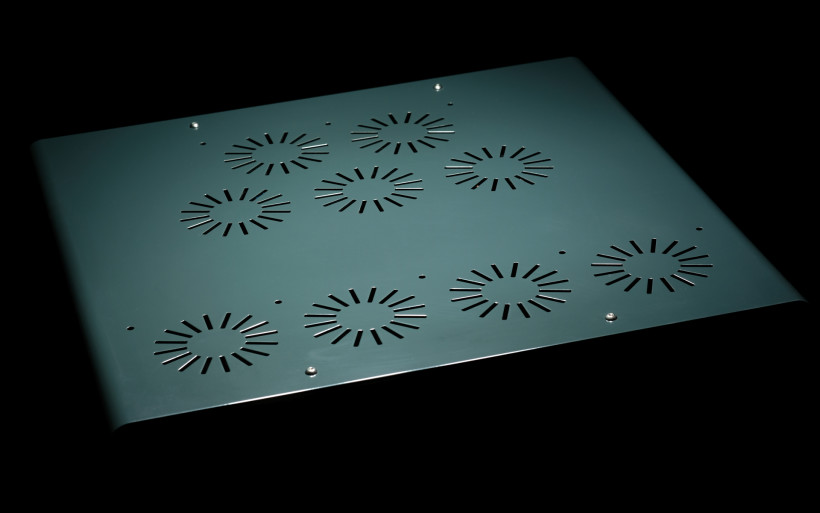 Pro iCAN is voiced to be musical even with its JAN GE5670 disengaged and as such it doesn’t sound dry at all. It’s safe to say that the very core of this product is partially similar to the DFP. These differently voiced yet coherent performers were made by skilled individuals very much into music as a whole and not dissected into small bits and pieces. Pro iCAN is also laid back, which nicely complements its inherently enjoyable attitude, whereas the DFP has its exciting element boosted, which in fact revealed itself as the second key twist. With Meze Empyrean on duty, the German product sounded snappier, hit harder and was the more intense of the two. Picture large drums beaten senselessly or fast unamplified solos on acoustic guitars, that’s the job the DFP did in more impactful, quicker and scale wise grander fashion. With easygoing minimalist and calm music it performed accordingly, but jumpier more adrenaline pumping repertoire it made utmost engaging. The more easygoing and hi-fi oriented Pro iCAN in this sense was calmer, unaltered, more balanced and not as potently zingy as the DFP. This disparity turned out to be what finally sold me on the German and Romanian combination.
Pro iCAN is voiced to be musical even with its JAN GE5670 disengaged and as such it doesn’t sound dry at all. It’s safe to say that the very core of this product is partially similar to the DFP. These differently voiced yet coherent performers were made by skilled individuals very much into music as a whole and not dissected into small bits and pieces. Pro iCAN is also laid back, which nicely complements its inherently enjoyable attitude, whereas the DFP has its exciting element boosted, which in fact revealed itself as the second key twist. With Meze Empyrean on duty, the German product sounded snappier, hit harder and was the more intense of the two. Picture large drums beaten senselessly or fast unamplified solos on acoustic guitars, that’s the job the DFP did in more impactful, quicker and scale wise grander fashion. With easygoing minimalist and calm music it performed accordingly, but jumpier more adrenaline pumping repertoire it made utmost engaging. The more easygoing and hi-fi oriented Pro iCAN in this sense was calmer, unaltered, more balanced and not as potently zingy as the DFP. This disparity turned out to be what finally sold me on the German and Romanian combination.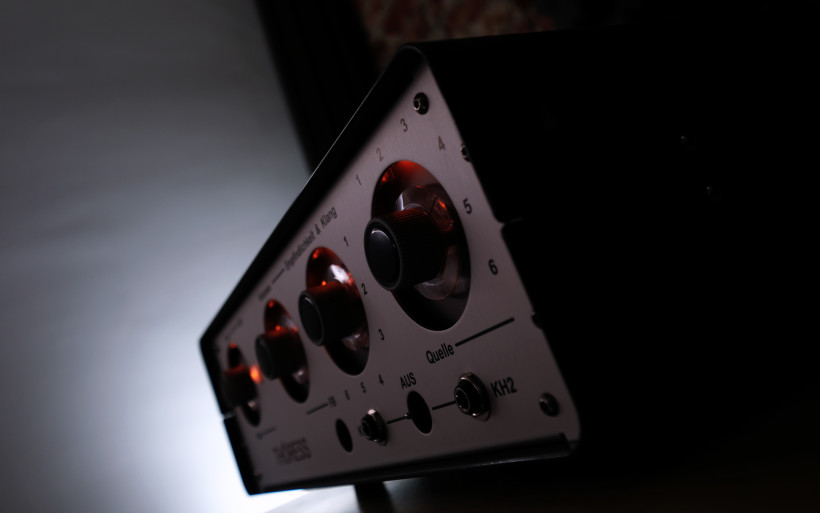 As I’ve learnt later on, the exercise above painted quite the accurate picture of what the DFP was all about in general, how distinctively differently it sang in comparison to any other headphone deck I’m familiar with. It revealed itself as a sophisticated, potent and intimate mood maker done right. But the real challenge was my freshly acquired HiFiMan Susvara. The two didn’t enjoy each other’s company too much early on. With this particular load, the DFP introduced significant amount of distortion halfway through its volume scale. It was a struggle. Reinhard explained that this turn of events was expected as his machine wasn’t tailored to handle such demanding headphones from the get-go. The man explained what needed to be done and I followed via opening the DFP and snipping legs of two diodes in total. This quick procedure removed the product’s voltage limitation to now have its 30V tap fully open. Boom.
As I’ve learnt later on, the exercise above painted quite the accurate picture of what the DFP was all about in general, how distinctively differently it sang in comparison to any other headphone deck I’m familiar with. It revealed itself as a sophisticated, potent and intimate mood maker done right. But the real challenge was my freshly acquired HiFiMan Susvara. The two didn’t enjoy each other’s company too much early on. With this particular load, the DFP introduced significant amount of distortion halfway through its volume scale. It was a struggle. Reinhard explained that this turn of events was expected as his machine wasn’t tailored to handle such demanding headphones from the get-go. The man explained what needed to be done and I followed via opening the DFP and snipping legs of two diodes in total. This quick procedure removed the product’s voltage limitation to now have its 30V tap fully open. Boom.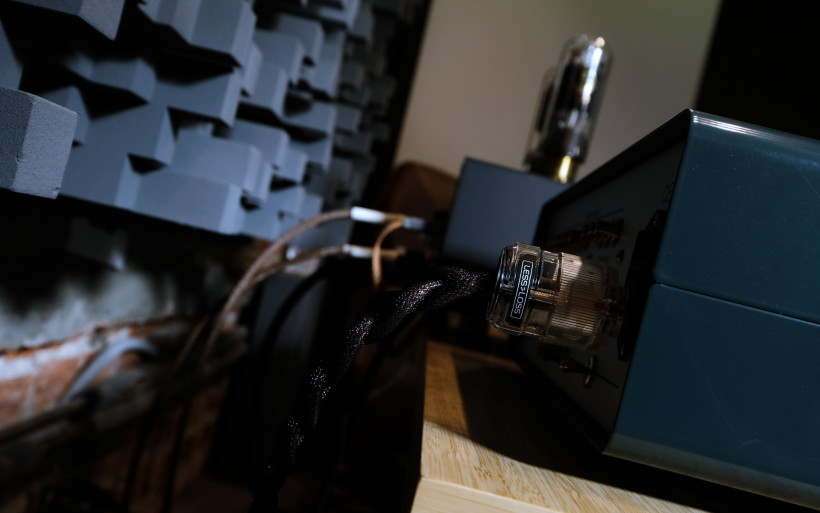 Several minutes in total was all it took to morph the DFP into a Susvara compliant machine. Downstairs distortions were no more, musical canvas was black as per usual and intimacy plus zing remained the two primary focal points. Due to Susvara’s spatial potency upped in comparison to the previously used load by Meze, sound opened up as well. All was good, yet the question whether this was enough remained. As demanding as they are, HiFiMan’s top of the line headphones require special treatment and the DFP largely behaved itself very nicely. However, Pro iCAN had the upper hand on counts such as driving ease and slam. It was heard rather well that this hybrid amp shifted one gear after another yet controlled the ride in the same firm and unshaken fashion. Simply put, the Meze order got reversed.
Several minutes in total was all it took to morph the DFP into a Susvara compliant machine. Downstairs distortions were no more, musical canvas was black as per usual and intimacy plus zing remained the two primary focal points. Due to Susvara’s spatial potency upped in comparison to the previously used load by Meze, sound opened up as well. All was good, yet the question whether this was enough remained. As demanding as they are, HiFiMan’s top of the line headphones require special treatment and the DFP largely behaved itself very nicely. However, Pro iCAN had the upper hand on counts such as driving ease and slam. It was heard rather well that this hybrid amp shifted one gear after another yet controlled the ride in the same firm and unshaken fashion. Simply put, the Meze order got reversed.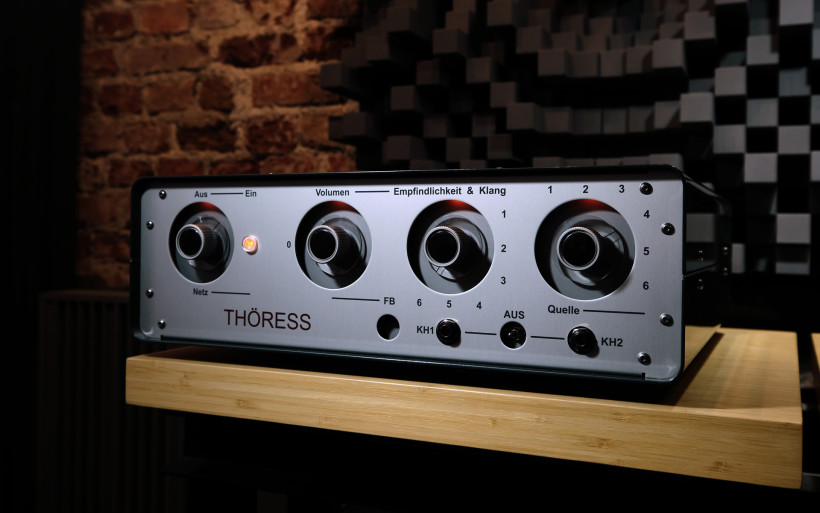 To keep up with SPL, Reinhard’s machine at times went as high as 6 o’clock, whereas the Brit sounded more easefully still and had far more headroom left. Susvara can sound loud from many headphone outs, however to hear this product also undistorted, reaching deep and authoritative is key. Even though I appreciated the DFP with this planar specimen in case of minimalist and gentle music, objectively speaking Pro iCAN scored a point. Before this assignment started for good, Reinhard had a firm idea of what could be done with his line stage if it’d turn out that the snipping procedure conducted later on wouldn’t be enough. This approach would require an operation at his bench directly, which we didn’t do. However, his willingness to go this route not just for me but any interested person was the important bit and highly appreciated one at that.
To keep up with SPL, Reinhard’s machine at times went as high as 6 o’clock, whereas the Brit sounded more easefully still and had far more headroom left. Susvara can sound loud from many headphone outs, however to hear this product also undistorted, reaching deep and authoritative is key. Even though I appreciated the DFP with this planar specimen in case of minimalist and gentle music, objectively speaking Pro iCAN scored a point. Before this assignment started for good, Reinhard had a firm idea of what could be done with his line stage if it’d turn out that the snipping procedure conducted later on wouldn’t be enough. This approach would require an operation at his bench directly, which we didn’t do. However, his willingness to go this route not just for me but any interested person was the important bit and highly appreciated one at that.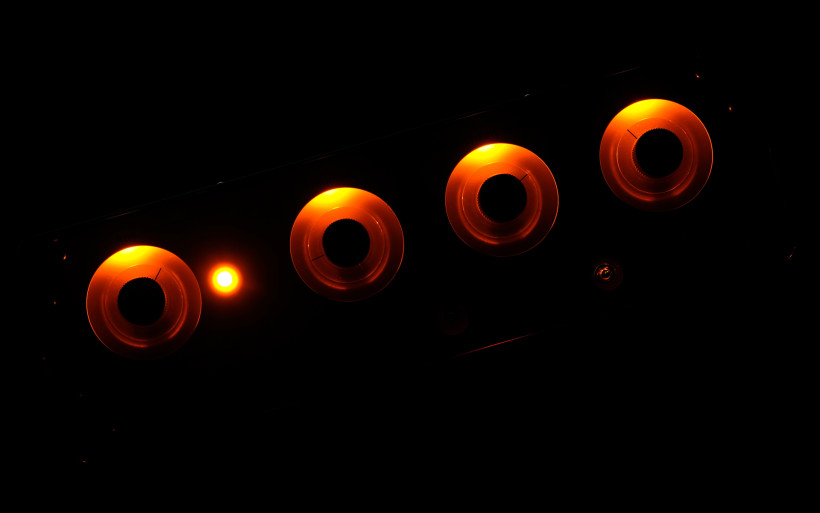 Beyerdynamic T1 was the last dish on the headphone menu. The DFP performed its already known magic very well and so did its British opponent. The T1 sounded the most flat, itchy and texturally shy of all three loads available, which both amps clearly expressed. Due to significant pigment injection similar to the Empyrean case and T1’s inherently stiff hi-rez frizzy character tempered, Reinhard’s product created quite the match with these cans. In exchange it took nothing other than the very first row yet again served closer than it usually was. Subjectively speaking, that was hardly a trade-off. At this point either my brain was well accommodated to enjoy such presentation or that was yet another synergistic accent to make the T1 this much more enjoyable. In any case, Pro iDSD did the same exact work on many counts, it even sounded as intense and agile as the DFP. The only disparity between the two was in sizing of instrumental bubbles they created and textural generosity. The Brit was more resolving yet a bit sharper and less tuneful, whereas today’s hero sounded prettier and more emotional at a cost of lesser insight. Objectively speaking, this battle resulted in a draw and let’s leave it at that.
Beyerdynamic T1 was the last dish on the headphone menu. The DFP performed its already known magic very well and so did its British opponent. The T1 sounded the most flat, itchy and texturally shy of all three loads available, which both amps clearly expressed. Due to significant pigment injection similar to the Empyrean case and T1’s inherently stiff hi-rez frizzy character tempered, Reinhard’s product created quite the match with these cans. In exchange it took nothing other than the very first row yet again served closer than it usually was. Subjectively speaking, that was hardly a trade-off. At this point either my brain was well accommodated to enjoy such presentation or that was yet another synergistic accent to make the T1 this much more enjoyable. In any case, Pro iDSD did the same exact work on many counts, it even sounded as intense and agile as the DFP. The only disparity between the two was in sizing of instrumental bubbles they created and textural generosity. The Brit was more resolving yet a bit sharper and less tuneful, whereas today’s hero sounded prettier and more emotional at a cost of lesser insight. Objectively speaking, this battle resulted in a draw and let’s leave it at that.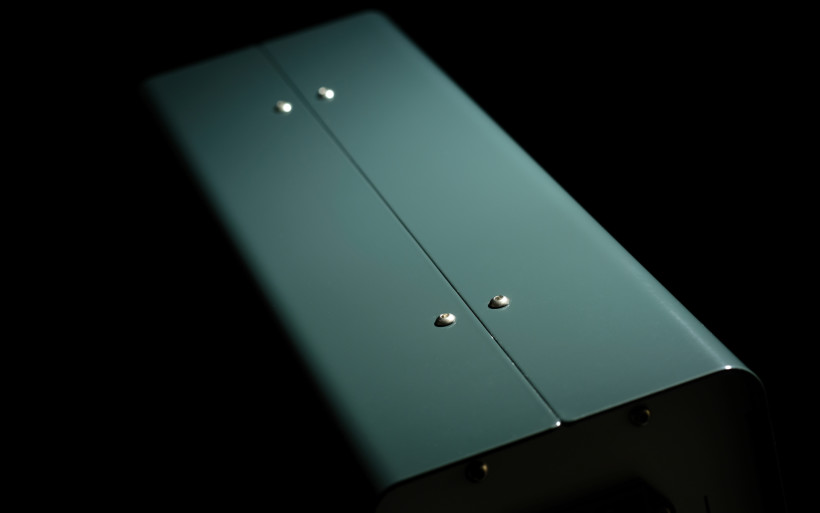 At this point the headphone part of this assignment was sorted. The DFP proved to be very potent with such products and not a single reason was found to think otherwise. I was all set to find out how much of this machine’s unique and very expressive character will I hear in the main setup with speakers on duty instead of cans. Since the EX-P7 preamp by Kinki Studio was still at my place, the DFP had to battle with it. Back then I already was aware of the former’s input and the Pass XP-12 story sheds more light on the subject.
At this point the headphone part of this assignment was sorted. The DFP proved to be very potent with such products and not a single reason was found to think otherwise. I was all set to find out how much of this machine’s unique and very expressive character will I hear in the main setup with speakers on duty instead of cans. Since the EX-P7 preamp by Kinki Studio was still at my place, the DFP had to battle with it. Back then I already was aware of the former’s input and the Pass XP-12 story sheds more light on the subject. The DFP’s spatial vicinity and directness manifested themselves in my room quite differently yet recognizably. On the contrary to cans, speakers aren’t capable of creating images in our heads. However, they can portray intimacy with ease via key instruments and vocals served up closely and presently. By painting very big panoramic spectacles and yet again focusing my attention on events materialized right in front of me, that’s what the DFP did indeed. All this was served as a finely assembled, organic, exceptionally coherent, movable and elastic wall of sound, rather than pinpoint accurate, perfectly chiseled standalone shapes with lots of air in-between.
The DFP’s spatial vicinity and directness manifested themselves in my room quite differently yet recognizably. On the contrary to cans, speakers aren’t capable of creating images in our heads. However, they can portray intimacy with ease via key instruments and vocals served up closely and presently. By painting very big panoramic spectacles and yet again focusing my attention on events materialized right in front of me, that’s what the DFP did indeed. All this was served as a finely assembled, organic, exceptionally coherent, movable and elastic wall of sound, rather than pinpoint accurate, perfectly chiseled standalone shapes with lots of air in-between.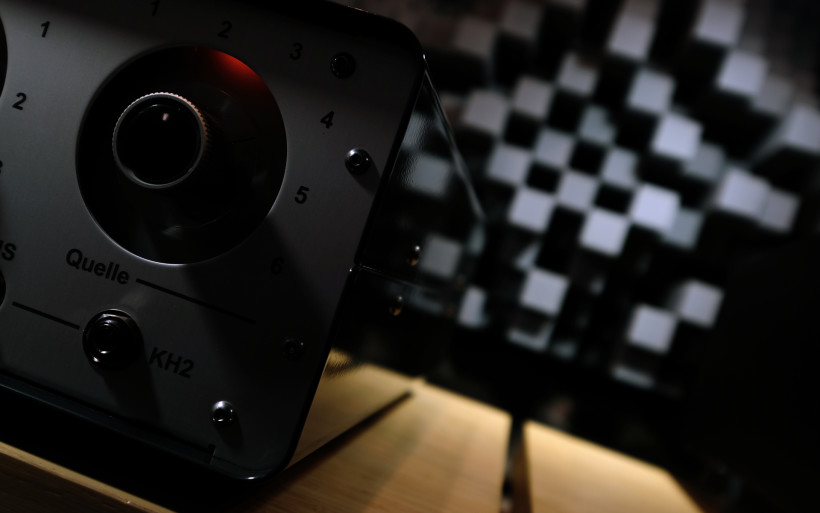 Yet again it was all about music delivered in very exciting, material and dense fashion at a cost of ultimate resolution and clarity. The DFP didn’t pursue these, but most interestingly my ears didn’t strive for more details or instrumental beings any more explicit than they already were. Every tiny bit of musical content was granted quite casually, as a side dish at best. The core of the show simply was way too flowing, fresh and pleasantly moist to fix my perception on things in this context not essential, yet still there if I wanted to have them. Perhaps that’s just me, but when the music is on, it’s on; if I’m captivated by it instead of thinking about this or that missing, I call this a job well done and that’s what the DFP enabled. As a specimen voiced to be utmost engaging and substantial, it simply didn’t pretend to be something it wasn’t in the first place and as such it clearly had its priorities in check.
Yet again it was all about music delivered in very exciting, material and dense fashion at a cost of ultimate resolution and clarity. The DFP didn’t pursue these, but most interestingly my ears didn’t strive for more details or instrumental beings any more explicit than they already were. Every tiny bit of musical content was granted quite casually, as a side dish at best. The core of the show simply was way too flowing, fresh and pleasantly moist to fix my perception on things in this context not essential, yet still there if I wanted to have them. Perhaps that’s just me, but when the music is on, it’s on; if I’m captivated by it instead of thinking about this or that missing, I call this a job well done and that’s what the DFP enabled. As a specimen voiced to be utmost engaging and substantial, it simply didn’t pretend to be something it wasn’t in the first place and as such it clearly had its priorities in check.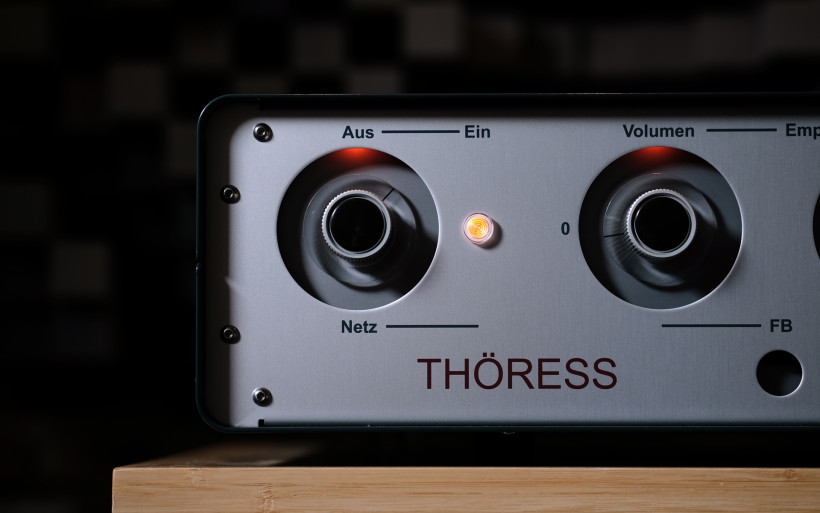 Tonal temperature audibly higher in comparison to the EX-P7 didn’t prevent the German from singing orderly. Even though it didn’t put information and insight on the pedestal, fuzzy, bloated or excessively warm cards weren’t on its hand either, here the DFP’s snappy attitude kicked in yet again. This virtue fabulously boosted inherently moist and big sound sources artfully glued together to end up with superbly engaging, powerful and lively result. Valve charm driven this tightly I’ve found as unique as it was clever. Three quality headphone specimens already gave me a good taste of what Reinhard was after, but with speakers capable of portraying gargantuan space such as the two Swiss models I had, the sensation was even more intense. The result this fetching, euphonic, tangible, instant and speedy at the same time left my detail crave outside the door.
Tonal temperature audibly higher in comparison to the EX-P7 didn’t prevent the German from singing orderly. Even though it didn’t put information and insight on the pedestal, fuzzy, bloated or excessively warm cards weren’t on its hand either, here the DFP’s snappy attitude kicked in yet again. This virtue fabulously boosted inherently moist and big sound sources artfully glued together to end up with superbly engaging, powerful and lively result. Valve charm driven this tightly I’ve found as unique as it was clever. Three quality headphone specimens already gave me a good taste of what Reinhard was after, but with speakers capable of portraying gargantuan space such as the two Swiss models I had, the sensation was even more intense. The result this fetching, euphonic, tangible, instant and speedy at the same time left my detail crave outside the door.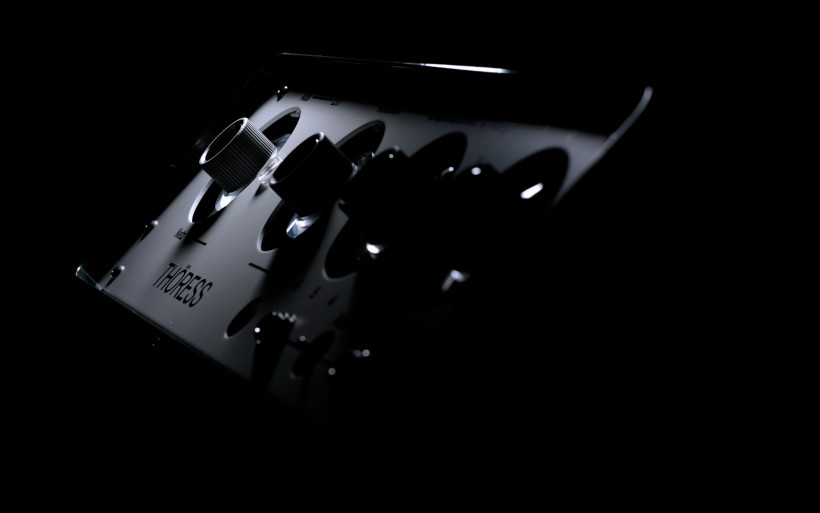 I’m far from saying that the DFP is the hardest hitting line stage out there. It favours saturation and textural complexity above finely outlined sketches too much to be viewed as one. It’s a domesticated, smooth and polite charmer, that’s its very core with no ifs or buts. However, with jumpy repertoire the DFP throws jabs far quicker and stronger than its topology would imply. That’s the twist which makes this product so special. Reinhard said at some point that valve aroma on steroids was his plan from the get-go. He knew well that textural generosity, complexity, spatial grandeur and dynamic contrasts have to be served at once, otherwise the engaging lively bit is lost. I can only agree.
I’m far from saying that the DFP is the hardest hitting line stage out there. It favours saturation and textural complexity above finely outlined sketches too much to be viewed as one. It’s a domesticated, smooth and polite charmer, that’s its very core with no ifs or buts. However, with jumpy repertoire the DFP throws jabs far quicker and stronger than its topology would imply. That’s the twist which makes this product so special. Reinhard said at some point that valve aroma on steroids was his plan from the get-go. He knew well that textural generosity, complexity, spatial grandeur and dynamic contrasts have to be served at once, otherwise the engaging lively bit is lost. I can only agree. Kinki Studio EX-P7 sounded very differently in comparison to the DFP. The space the former created was deeper though of similar width and height, yet the main difference was in how it was filled. The Chinese sketched instruments and vocals more clearly and was less generous with pigment. It dissected them and served all perfectly visible to provide more insight, but was less coherent and surely not as tuneful. Kinki Studio’s line stage behaved less jumpy, present and here, more stale, distant and there. It does fabulous job for the coin, but on sophistication and refinement counts the DFP was tiered far higher as well. Reinhard’s machine handled real instruments and voices in a way its competitor simply wasn’t capable of.
Kinki Studio EX-P7 sounded very differently in comparison to the DFP. The space the former created was deeper though of similar width and height, yet the main difference was in how it was filled. The Chinese sketched instruments and vocals more clearly and was less generous with pigment. It dissected them and served all perfectly visible to provide more insight, but was less coherent and surely not as tuneful. Kinki Studio’s line stage behaved less jumpy, present and here, more stale, distant and there. It does fabulous job for the coin, but on sophistication and refinement counts the DFP was tiered far higher as well. Reinhard’s machine handled real instruments and voices in a way its competitor simply wasn’t capable of.
Summary
Products capable of scoring as equally high notes as line and headphone drives are rare. My own track record thus far listed Pass Labs HPA-1 as the only one which truly excelled on both these counts and today’s hero fits the description as well. It did no less than two highly unrealistic hits with just one stone as swiftly as the Pass two years ago.
Just as any other Reinhard’s product, his visually peculiar Dual Function Preamplifier can’t be mistaken with any other hardware on the market. This fine example of the so-called German engineering was clearly made to take us several decades back in time and it shows. I honestly can’t say whether the DFP’s vintage styling will rock your boat, but it surely rocks mine. Subjectively speaking I wouldn’t change a thing in it, it’s gorgeous as is.
Thöress Dual Function Preamplifier is brilliantly put together, loaded with everything necessary for its two jobs and stable as a rock. Reinhard views it as a no frills utmost practical audio hardware meant to do what it’s supposed to, however yours truly also saw a labour of love. Only a devoted passionate free from pressure and industry fads could come up with such a distinctive product.
Reinhard’s latest machine voiced to show music from utmost fetching, sensual, emotionally engaging and euphonic side is a true valve class act and no less, but its inherently dynamic attitude revealed itself as the true clincher. This specific virtue boosted all pleasure related qualities, which resulted is utmost lively, open-throated and fabulously agile spectacle. Highly dosed pleasure served in such an intense, expressive and exciting fashion not only is plainly impressive and very rare, but also quite the achievement all by itself. Not too shabby for a ‘practical audio hardware meant to do what it’s supposed to’, ain’t it? ‘Till next time!
Associated equipment:
- Amplifiers: FirstWatt F7, Kinki Studio EX-B7
- Sources: LampizatOr Pacific (KR Audio T-100 + KR Audio 5U4G Ltd. Ed.)
- Speakers: Boenicke Audio W8, soundkaos Libération
- Preamplifiers: Kinki Studio EX-P7
- Headphones: HifiMan Susvara, Meze Empyrean, Beyerdynamic T1
- Transports: fidata HFAS-S10U
- Speaker cables: Audiomica Laboratory Celes Excellence, LessLoss C-MARC
- Interconnects: Audiomica Laboratory Erys Excellence
- Power components: Gigawatt PC-3 SE EVO+, Gigawatt PF-2 + Gigawatt LC-2 MK2 + Forza AudioWorks Noir Concept/Audiomica Laboratory Ness Excellence/LessLoss C-MARC
- Rack: Franc Audio Accesories Wood Block Rack
- Music: NativeDSD
Retail prices of reviewed components in EU (incl. VAT):
- Thöress Dual Function Preamplifier: €9’900
Manufacturer: Thöress Puristic Audio Apparatus


